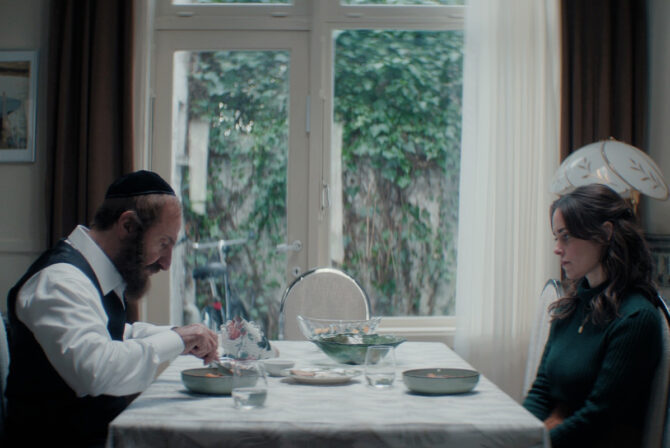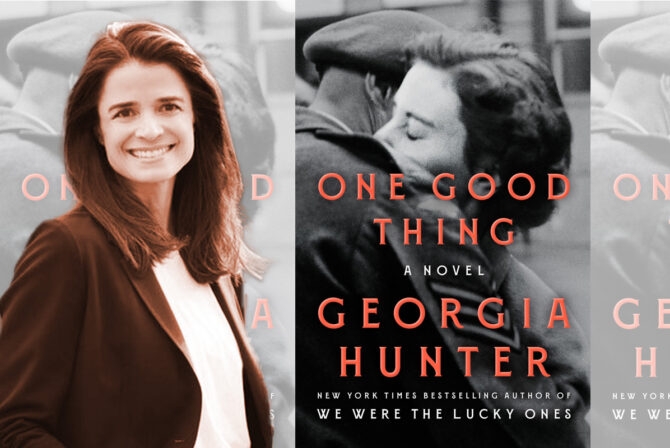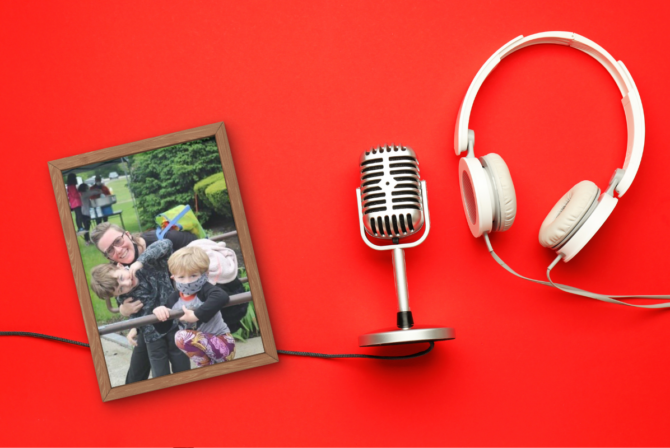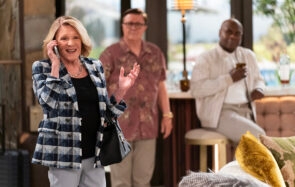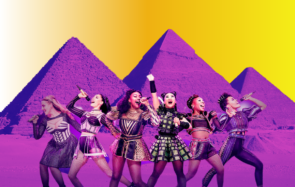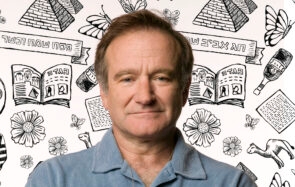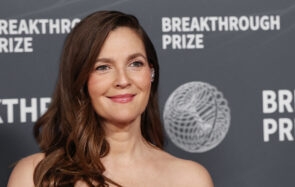Artist Joseph Bau is the subject of a new Holocaust film, “Bau, Artist at War.” A scene based on his wedding was already in one of the most iconic Holocaust movies of all time, “Schindler’s List,” and Bau himself appeared at the end of the Spielberg movie, laying a stone on Oskar Schindler’s grave. By contrast, the new Holocaust film he’s featured in is colorful and humorous. Yes, those words may feel wrong in the context of a film about the Holocaust, but they embody the spirit of Bau, a graphic designer, artist, illustrator, animator, mapmaker, forger and writer who helped fellow Jewish prisoners survive through forged documents — and later became one of the founders of the Israeli animation industry.
Jewish actor Emile Hirsch, star of “Into the Wild,” “Milk” and “Once Upon a Time in Hollywood,” plays Bau, and Inbar Lavi, of “Lucifer” and “Eight Gifts of Hanukkah,” plays his wife Rebecca Tennenbaum, who he met at the Płaszów concentration camp. The film’s poster features Bau’s art: an illustration of the two of them kissing, the number tattooed on Rebecca’s arm on clear display. While the trailer for the movie may start off as dramatic and dark as any a Holocaust biopic, Bau soon turns to art and humor to make this tale feel a little different from your standard Holocaust tale.
Bau was a student at the Faculty of Plastic Arts in the University of Krakow when German occupation halted his studies, and he was sent to the city’s Jewish ghetto. It was there that he first used his graphic training to forge documents that helped people leave and travel to safety. It was also from there that he was taken to Płaszów concentration camp, where the Nazis forced Bau to use his graphic skills to draw maps and signage. At night, he continued his forgeries, helping save lives of fellow interred Jews.
One day, when he was standing outside a building, holding up a framed map of the camp, a young woman in a striped dress happened by — Rebecca. When she asked him what he was doing, he said he was waiting for the sun that wouldn’t come — would she be willing to take its place? After that, Joseph started calling her his sun. Their romance blossomed in a place where, as Rebecca recalled in one testimony “every hug could be the last.” They were married in the camp’s women’s barracks by Bau’s mother. A melted spoon was fashioned into their wedding bands. They had a special whistle they used to find each other in the camp. While they were separated for a period of time — Joseph made his way to Oskar Schindler’s camp and Rebecca did not — they did end up reuniting after the war; they had a real wedding in Krakow, with a rabbi and the works.
They lived in the Polish city where Bau finished his studies and worked as a graphic artist until 1950, and welcomed their first daughter there. In 1950, they made aliyah and settled in Tel Aviv, where the couple welcomed their second daughter and where Bau had a prolific career as a graphic artist, animator and general visual jack of all trades. He created some of the first Israeli animations and incredible Hebrew fonts. He also secretly worked as a graphic artist for the Mossad, helping forge documents that, among other things, were used while capturing Adolf Eichmann and bringing him to Israel, and to help Israeli spy Eli Cohen.
Comedy was always a vital part of Bau’s life. The artist created satirical haggadahs about Nazi occupation, drew anti-Nazi caricatures for Polish newspapers, wrote joke dictionaries and humorous stories in Hebrew. Jokes were a natural part of his vocabulary, even at the concentration camp. When asked how he could find the strength to still make jokes during the Holocaust and in his dying days, he responded: “Strength isn’t the right word — love is.” He passed away in 2002.
You can still visit his studio in Tel Aviv today, now the Joseph Bau House Museum at 9 Berdyczewski Street. There you’ll find a lot of his art, photos and pieces from his life in Poland and in Israel — including the desk that he brought from Poland and that he used in his early days studying art before the Nazi occupation — and a very funny and risque sink that Bau used to get a feel for anyone who visited his studio — to see if they had the same joyfully childish humor that he did.
“Joseph Bau’s story reminds us that love, creativity and courage can overcome even the worst darkness. It’s a message we all need — now more than ever. We must never forget,” the film director’s Sean McNamara shared in a statement on Yom HaShoah. The movie will be coming to theaters on Sept. 24, 2025. May the memory of Joseph Bau be for a blessing, and a reminder to us all to find humor, creativity and love in life’s harshest moments.

